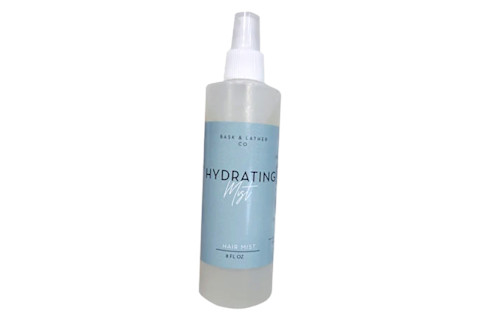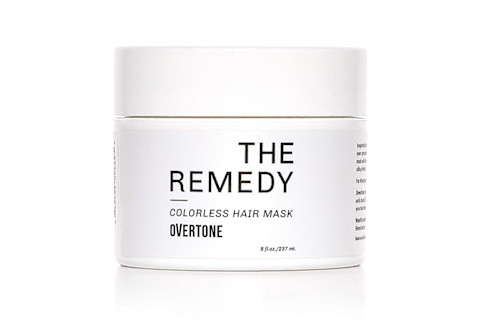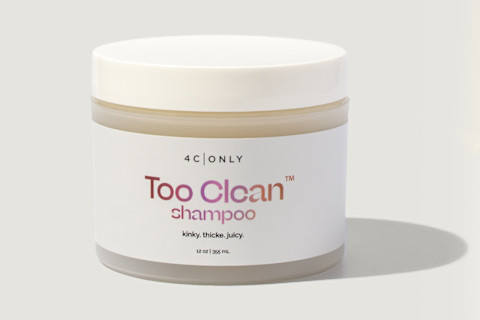
If you're a member of the natural hair community, even if it's not your hair type, you're well aware of 4C hair. Once relegated as a "difficult to work with" or "unpresentable" hair type, changing attitudes about natural hair in general and the movement to embrace your kinks and coils in all their glory has helped to turn the tide.
And thanks to the booming natural hair products industry and more representation via 4C influencers, people with this hair type are no longer encouraged to simply relax their hair to make it more manageable.
What is 4C hair?
If hearing terms like 4C or even 2B/3A sound foreign, that's OK. Most people know that there are various hair textures from straight to wavy to curly, but celebrity hairstylist Andre Walker developed a hair-type chart that helps to further categorize hair. It ranges from 1 to 4 with several subtypes along the way.
While Type 1 and Type 2 are reserved for straight and wavy hair respectively, 3 and 4 are for curly and kinky-curly. Within the Type 4 kinky-curly category, there are three additional subcategories: 4A, 4B, and 4C.
Each letter refers to a specific curl pattern within the general Type 4 category. Although, if we're being entirely honest, 4C is a category that wasn't initially included in Andre Walker's typing system.
4C hair is typically defined as being densely packed and sometimes lacking definition. Often people with 4C hair will experience intense shrinkage—meaning that their hair can look deceptively short when it's fully dried.
And although all curly and kinky-coily hair types tend to be more delicate than straight hair, 4C hair is considered the most delicate. But aside from curl pattern or shrinkage, people with 4C hair can have coarse or superfine strands or soft versus wiry textures.
For more help identifying your curl type, take mbg's curl type quiz.

What does 4C hair look like?
4C hair has a spiral texture, but the spiral might look miniature. Depending on whether someone opts to define their coils or fluff them out, you might notice what looks like ribbon curls on defined strands, or a general fluffy appearance on hair that's been separated or air-dried.
Similar to other natural hair textures (i.e., traditionally types 3 and 4), the curl pattern is more easily identified on wet hair versus if it's allowed to dry naturally when the curls have separated.
As we mentioned earlier, 4C hair length can be deceptive because of shrinkage. As Starr Mason, a field education leader for Hair Cuttery Family of Brand's commented "Please note that shrinkage is REAL. 4C hair is much longer than it appears."
But like other curlies, 4C heads can also straighten their hair—as long as they use a good heat protectant to avoid heat damage, which can alter their curls. Also, note that it's not uncommon to have multiple curl patterns on your head. So, it's completely normal if your general hair type is 4C but you have sections of 4B hair. If you're concerned about uneven effects, learning how to properly style your hair to create a more uniform texture can help.
Hair care tips for 4C hair
As any natural head will tell you, hair care is personal. While general tips or recommendations are always helpful to guide you on your natural hair journey, preferred techniques and product picks are going to depend on your experiences. Not everyone will have success with the same products or routines.
If you're just transitioning to natural after years of relaxing (or even texlaxing!), be prepared for a learning curve. And this is especially true if you refuse to big chop (cut off all your relaxed hair) and instead prolong your transition by growing out your natural hair to the desired length first.
Extended transitioners will need to be mindful of breakage at the transition point where your natural and relaxed hair meets. But the following tips are great starting guides to help you on your hair journey:
Be gentle
Of all the hair types, 4C is the most fragile. Avoid detangling when your hair is dry, as this can encourage breakage. Don't be unnecessarily rough when handling your hair. Invest in a good wide-tooth comb or opt to finger detangle for the most gentle approach.
Moisture is your friend
Curly hair craves moisture. Unlike your Type 1 and 2 friends, curly hair often suffers from dryness because natural oils produced by the scalp don't travel down the full length of the hair shaft. Type 4 hair thrives when it's properly moisturized. You'll find that it's easier to create styles and to get those coils poppin' when you quench your hair's thirst. Also, consider hydrating your hair with a spray bottle filled with an aloe vera juice and water mix. For best results, opt for organic, unflavored aloe vera.
Check your diet
While you should invest in a good topical moisturizer, don't forget to hydrate from within. Drink up by incorporating more water into your daily routine. Gwen Jimmere, founder and CEO of Naturalicious, highlights that a great way to promote hair growth is with a healthy diet rich in dark green vegetables. "These veggies are full of iron, vitamins, and folic acid that make your hair so much more resistant to split ends."
Don't skip haircuts and trims
Length retention and growth are common desires for anyone with a head of hair. But many naturals incorrectly assume that cutting their hair will set them back on their growth journey. Jiquea Evan, a stylist from GoodBody Salon in Oakland states that the opposite is true, mentioning that "...shrinkage should never stop you from getting a haircut when having 4C hair. You have to maintain your ends if you want to retain length. Always choose health over length."
Embrace protective styles—but within reason
Protective styles are a great way to give your hair a break from constant manipulation—especially when cold weather arrives. But you still need to take care of your hair whether you opt for braids, wigs, or weaves. Along with making sure you're keeping your hair clean while in a protective style, be mindful of how much tension is being placed on your hair to create your desired look.
While protective styles can help you retain length by letting your hair rest, that won't matter much if extreme tension leads to traction alopecia. As tempting as it is to let a braider create braids that are tighter so that your style lasts longer—don't do it. And remember to remove protective styles within four to eight weeks after having them installed with a breather period before you opt for another one.
Good hair starts with a healthy scalp
Considering that your hair comes out of your scalp, don't forget to show it some TLC. Monique Jackson, a stylist at GoodBody Salon, recommends regularly oiling or moisturizing your scalp. "Any oil that you apply to the scalp will travel to the rest of the hair [ensuring] needed moisture throughout the ends. You should be oiling your scalp at least once a day or as necessary...especially while wearing hair in protective styles."
Check your porosity
While finding the right products for your hair can include a bit of trial and error, you can eliminate some of the guesswork by determining your hair porosity. This simply refers to how easily your hair retains moisture. Although curly hair is naturally prone to dryness, your hair's porosity level might show that you struggle more than normal to retain moisture—meaning that you should focus more on humectants.
There are three porosity levels, high, medium, and low. High porosity means that your hair allows moisture to easily slip out of the hair shaft with fully open cuticles. Medium porosity hair has regularly aligned cuticles and retains moisture properly. Meanwhile, low porosity hair has tightly aligned cuticles, and moisture can't penetrate as easily. If you're not sure of your porosity, this simple one-minute test will help.
Products for 4C hair
We can't stress enough that product picks are personal and the items you consider Holy Grails might be different from what we've listed. But, if you're just starting with natural hair care and feel overwhelmed by all the options, this is a great starting point.
Best hair moisturizer for 4C hair

Best leave-in conditioner for 4C hair

Best deep conditioner for 4C hair

Best edge control for 4C hair

Best gentle shampoo for 4C hair

Styles for 4C hair
Like other kinky-curly hair types, 4C hair is incredibly versatile. If you prefer to stick to heat-free styles, you can opt for a wash 'n' go, or modify it by shingling your hair. For beauties concerned about different curl patterns throughout their hair, create uniformity by setting your hair on twists or braids.
Temporary straight styles can include silk presses and blowouts—although you should always apply a good heat protectant first to make sure your curls pop back on your next wash day. And the added benefit of blowouts and silk presses is that you can also set your hair on bantus to create gorgeous voluminous curls.
For protective styles, again there are so many options. Braids and twists are popular choices, but you can also opt for crochet styles, which can sometimes be faster to install. And there are also wigs or weaves, if you prefer. All of these styles allow you to play with color, texture, and length without damaging your hair.
For best results, you should go to an experienced stylist, avoid braiding or twisting your hair too tightly, and take them down roughly four to eight weeks after getting them.
The bottom line
Good hair is healthy hair, and there's no reason that 4C hair can't be healthy, lush, and the envy of everyone you encounter. While you might need to do a bit of trial and error to find the perfect products, 4C hair can be gorgeous, moisturized, and versatile. If you're just starting your natural hair transition, consider speaking with a natural-hair stylist who can help you shift into the community and provide tips, as well as product recommendations to bring out the best in your hair.

